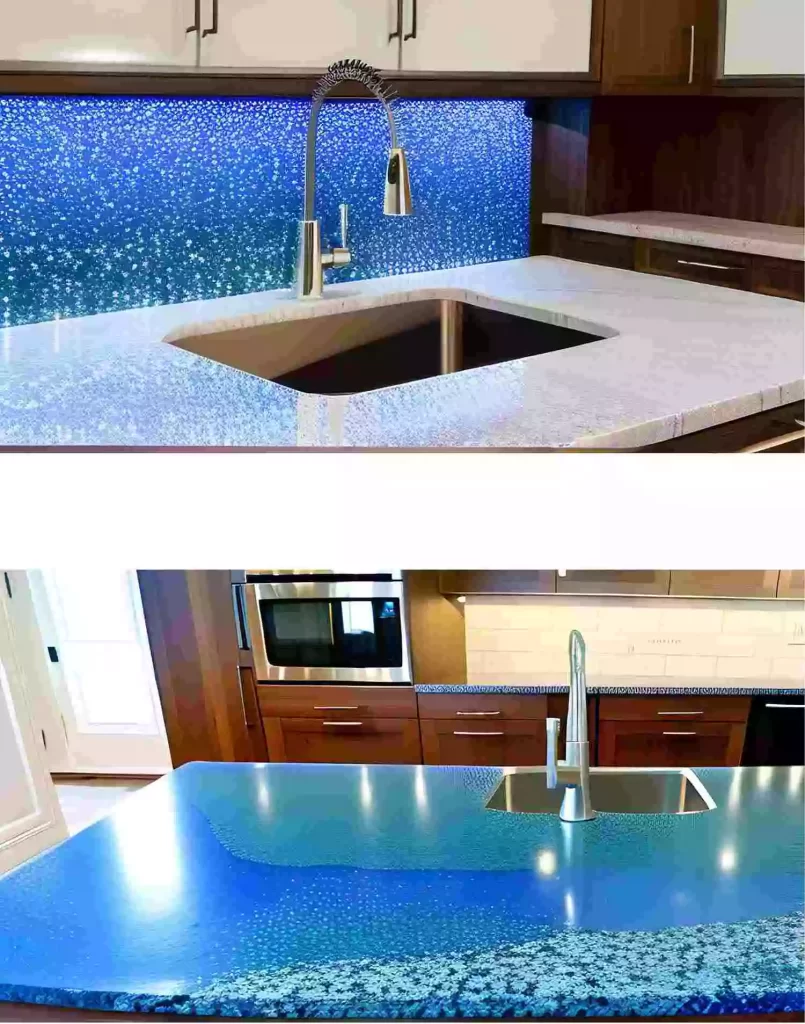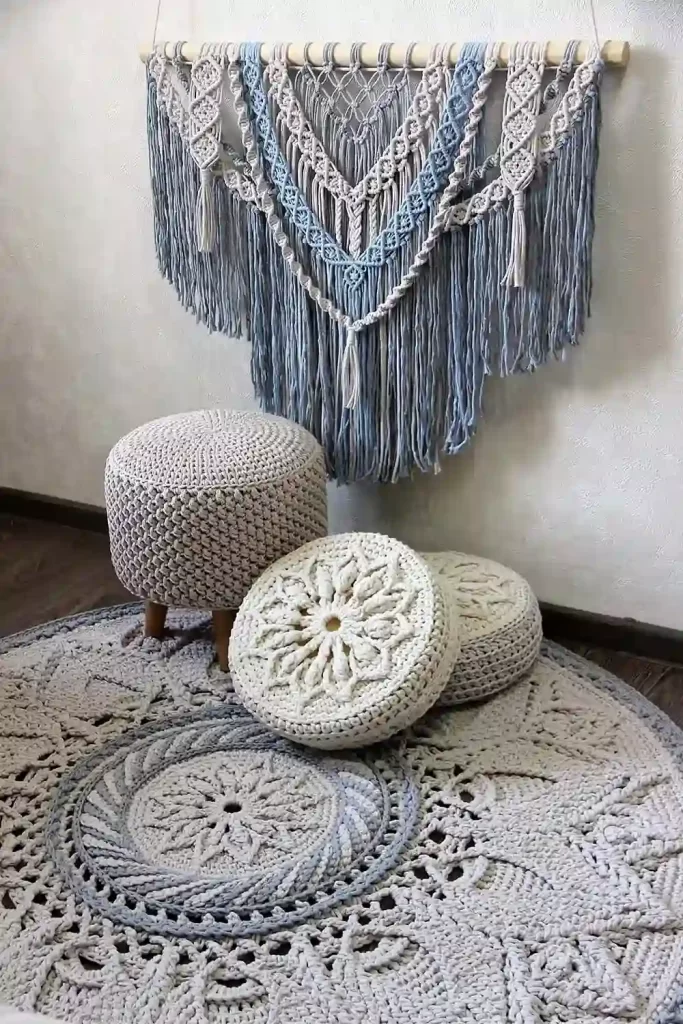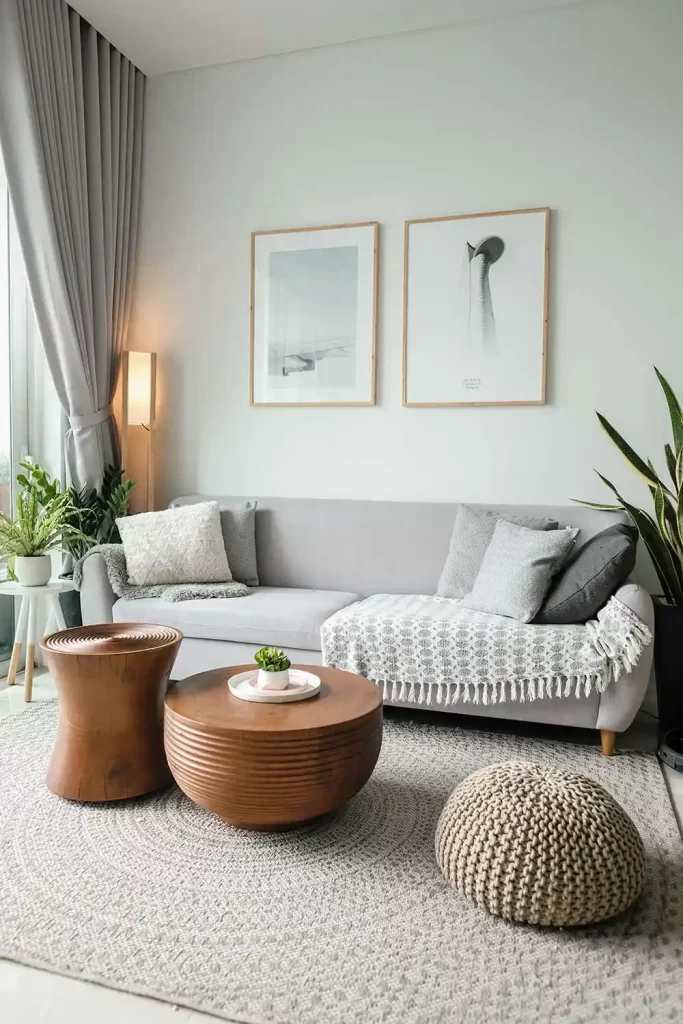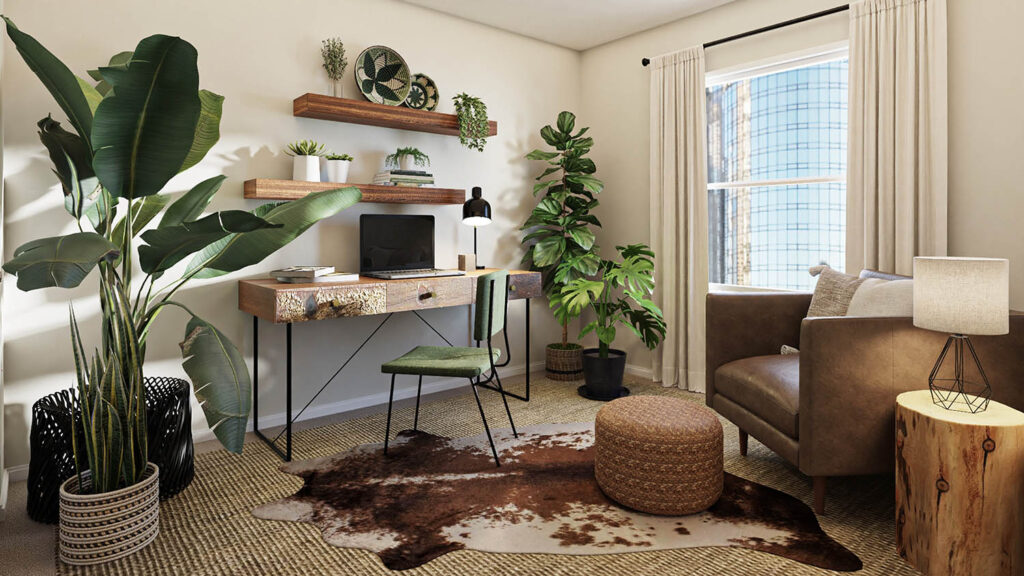Nature’s Embrace: How Eco-Friendly Interior Design Can Perfectly Change Your Home and Planet

Table of Contents
In today’s world, where environmental concerns are at the forefront, eco-friendly interior design has gained significant popularity.
With growing awareness of the impact our choices make on the planet, more and more individuals are seeking ways to create sustainable and environmentally conscious spaces.
Eco-friendly interior design offers a remarkable opportunity to transform our homes and workplaces into harmonious, stylish, and eco-conscious sanctuaries.
What does eco-friendly interior design mean?
Eco-friendly interior design, also known as sustainable or green interior design, refers to the practice of creating living or working spaces that are environmentally conscious, socially responsible, and resource-efficient.
It involves incorporating design elements, materials, and practices that minimize negative environmental impacts while promoting health and well-being.
Importance of eco-friendly interior design
The importance of eco-friendly interior design stems from the urgent need to address environmental challenges and promote sustainable living.
Here are some key reasons why it holds significance:
- Environmental Impact: Traditional interior design practices often contribute to resource depletion, pollution, and habitat destruction.
The eco-friendly interior design seeks to minimize these impacts by utilizing sustainable materials, reducing energy consumption, and conserving water resources.
- Health and Well-being: Our indoor environment directly affects our health and well-being.
The eco-friendly design focuses on improving indoor air quality, reducing exposure to harmful chemicals, and promoting natural lighting and ventilation, which can enhance comfort and overall wellness.
- Resource Conservation: Sustainable design emphasizes the efficient use of resources such as energy, water, and materials.
By choosing renewable or recycled materials, implementing energy-efficient technologies, and optimizing water usage, the eco-friendly interior design minimizes waste and helps preserve natural resources.
- Climate Change Mitigation: Buildings are significant contributors to greenhouse gas emissions. The eco-friendly interior design incorporates energy-efficient appliances, lighting systems, and insulation, reducing carbon footprints and combating climate change.
- Aesthetics and Creativity: Contrary to the misconception that sustainable design lacks style, eco-friendly interior design offers a wealth of creative opportunities.
With a focus on natural elements, unique textures, and innovative design solutions, sustainable spaces can be visually stunning and distinct.
Benefits of eco-friendly interior design
The benefits of eco-friendly interior design are multifaceted:
- Improved Indoor Air Quality: By using low VOC (Volatile Organic Compounds) paints, formaldehyde-free furniture, and non-toxic materials, the eco-friendly design reduces the presence of harmful pollutants in the air, promoting better respiratory health.
- Energy and Cost Savings: Energy-efficient lighting, appliances, and insulation result in reduced energy consumption and lower utility bills over time.
- Enhanced Comfort and Well-being: Incorporating elements such as natural lighting, proper ventilation, and biophilic design can improve mood, productivity, and overall well-being.
- Longevity and Durability: Sustainable materials and quality craftsmanship ensure that eco-friendly interiors withstand the test of time, reducing the need for frequent replacements and minimizing waste.
- Ethical and Social Responsibility: Supporting eco-friendly interior design promotes ethical sourcing, fair labor practices, and responsible manufacturing, contributing to a more equitable and sustainable society.
The Essence of Eco-Friendly Interior Design
Creating an eco-friendly interior design involves a careful balance of aesthetics, functionality, and environmental consciousness.
By utilizing sustainable materials, maximizing energy efficiency, and embracing nature-inspired design elements, eco-friendly interiors not only reduce carbon footprints but also foster a healthier living environment.
Sustainable Materials:
When it comes to eco-friendly interior design, the choice of materials is crucial for creating sustainable and visually stunning spaces.
Here are some examples of eco-friendly materials and their benefits:
Reclaimed Wood

Sleek furniture crafted from reclaimed wood adds charm and character.
Reduces the demand for new wood and contributes to a greener future.
Recycled Glass Countertops:

Countertops made from recycled glass provide a unique and beautiful surface.
Helps divert waste from landfills and reduces the need for new raw materials.
Organic Fiber Rugs:

Stunning rugs woven from organic fibers add natural beauty to your space.
Supports sustainable agriculture practices and avoids the use of synthetic materials.
Bamboo and Cork:

Embracing sustainable materials like bamboo and cork reduces deforestation.
Add a touch of natural beauty while being durable and renewable.
Organic Fabrics:

Selecting fabrics made from organic cotton, hemp, or bamboo offers multiple benefits.
Upholstery and curtains are free from harmful chemicals and support ethical textile practices.
Eco-Friendly Paint:

Low VOC or VOC-Free: Volatile Organic Compounds (VOCs) are chemicals found in conventional paints that can release harmful emissions into the air, contributing to indoor air pollution and potential health issues.
Eco-friendly paints are low in VOCs or even VOC-free, meaning they have minimal or no harmful emissions.
Natural and Non-Toxic Ingredients: Eco-friendly paints often use natural ingredients like plant-based oils, resins, and pigments.
These paints are free from harmful substances like formaldehyde, heavy metals, and toxic solvents.
Water-Based Formulas: Water-based paints, also known as latex or acrylic paints, are a common type of eco-friendly paint.
They have lower VOC content, are easy to clean up with water, and offer good durability and coverage.
Natural Pigments: Some eco-friendly paint brands utilize natural pigments derived from sources like minerals, clay, and plant extracts.
These pigments offer a range of beautiful and earthy hues while reducing the use of synthetic dyes.
Biodegradable and Sustainable Packaging: Many eco-friendly paint brands are conscious of their packaging materials.
They opt for biodegradable or recyclable containers made from sustainable materials, reducing waste and environmental impact.
Eco-Friendly Wallpaper:

Recycled and Sustainable Materials: Eco-friendly wallpaper often incorporates recycled content, such as post-consumer waste or fibers derived from sustainable sources like bamboo or cork. These materials help reduce resource consumption and waste.
Water-Based Inks: Wallpaper printed with water-based, non-toxic inks eliminates the use of harmful chemicals found in traditional solvent-based inks. Water-based inks are safer for both the environment and human health.
PVC-Free Wallpaper: Polyvinyl chloride (PVC) is a common material used in wallpaper production but has negative environmental impacts throughout its life cycle. PVC-free wallpapers use alternative materials that are safer and more sustainable.
Removable and Repositionable Options: Some eco-friendly wallpapers are designed to be easily removable and repositionable without causing damage to walls. This feature reduces waste and allows for flexibility in design changes.
By incorporating these eco-friendly materials into your interior design, you not only create a visually captivating space but also promote sustainability, responsible consumption, and the use of natural resources.
Let these materials become the focal point of your eco-friendly design, telling a story of craftsmanship, innovation, and mindful choices.
Surround yourself with the beauty of nature while making a positive impact on the environment.
Energy Efficiency- Eco-Friendly Lighting and Technology

Lighting and technology play crucial roles in interior design, and opting for eco-friendly alternatives can contribute to a sustainable and energy-efficient environment.
Maximizing natural light, implementing energy-efficient lighting systems, and utilizing smart technology can significantly reduce energy consumption and lower utility bills.
LED Lighting: Utilizing LED bulbs not only consumes less energy but also lasts longer, reducing waste and maintenance costs.
Smart Home Technology: Integrating smart home systems enables efficient control over lighting, heating, and cooling, optimizing energy usage and reducing overall environmental impact.
Biophilic Design

bring nature indoors by incorporating elements such as indoor plants, green walls, water features, natural light, and views of nature.
These elements create a sense of connection with the natural world, even in urban environments.
Providing views of nature, whether through windows or interior courtyards, allows visually connect with the outdoors.
This connection has been shown to reduce stress, enhance cognitive function, and improve overall well-being.
also Introducing living elements such as water fountains or creating a sense of interaction and dynamism within the space.
These live systems not only enhance aesthetics but also contribute to improved air quality, acoustics, and overall environmental health.
Green Building Practices

Creating eco-friendly interiors goes beyond just the design elements; it also involves implementing green building practices that prioritize energy efficiency and sustainability.
Efficient Insulation: Proper insulation reduces heat loss, lowers energy consumption, and maintains a comfortable indoor environment.
Renewable Energy: Harnessing solar power through solar panels or utilizing geothermal heating and cooling systems can significantly reduce reliance on fossil fuels.
Water Conservation: Incorporating low-flow fixtures, rainwater harvesting systems, and water-efficient appliances promote responsible water usage within the space.
Tips for creating an eco-friendly interior design

Creating an eco-friendly interior design is an exciting endeavor that allows you to infuse your space with sustainability and style.
Here are some engaging tips to help you embark on your journey toward an eco-conscious and visually stunning interior:
Embrace Upcycling:

Give new life to old furniture and decor items by upcycling and repurposing them.
Get creative with paint, fabrics, and embellishments to transform discarded pieces into unique, personalized treasures.
Opt for Non-Toxic Paint:

Choose paints that are low in VOC (Volatile Organic Compounds) to minimize harmful emissions and create a healthier indoor environment.
Explore vibrant color options to add personality and charm to your space.
Integrate Recycled Materials:
Incorporate materials made from recycled sources, such as countertops crafted from recycled glass or tiles made from reclaimed materials.
These sustainable choices reduce waste and add a touch of eco-chic to your interior.
Optimize Energy Efficiency:

Install energy-efficient appliances, such as ENERGY STAR-rated refrigerators and washing machines, to reduce energy consumption and lower utility bills.
Use power strips with timers to automatically turn off electronics when not in use.
Use Sustainable Flooring:

Choose eco-friendly flooring options, such as bamboo, cork, or reclaimed wood, which are renewable and durable.
These materials add natural beauty and warmth to your interior while minimizing environmental impact.
Compost and Recycle:
Set up a composting system to divert food waste from landfills and create nutrient-rich soil for your plants.
Implement a recycling system that encourages proper sorting and disposal of recyclable materials.
Integrate Smart Home Technology:

Embrace smart home systems that allow you to control lighting, heating, and cooling remotely, optimizing energy usage and reducing waste.
Invest in smart thermostats and lighting systems for efficient and convenient management of energy consumption.
Choose Sustainable Window Treatments:

Opt for curtains or blinds made from organic fabrics or natural materials like bamboo.
These choices add texture and visual interest and provide insulation and light control.
Incorporate Nature:

Bring the outdoors in by adding indoor plants, terrariums, or a living green wall. These biophilic elements enhance air quality and create a sense of tranquility and connection with nature.
Remember, eco-friendly interior design is a journey and every small step counts.
By implementing these engaging tips, you can create a space that is not only beautiful and inviting but also sustainable and environmentally responsible.
